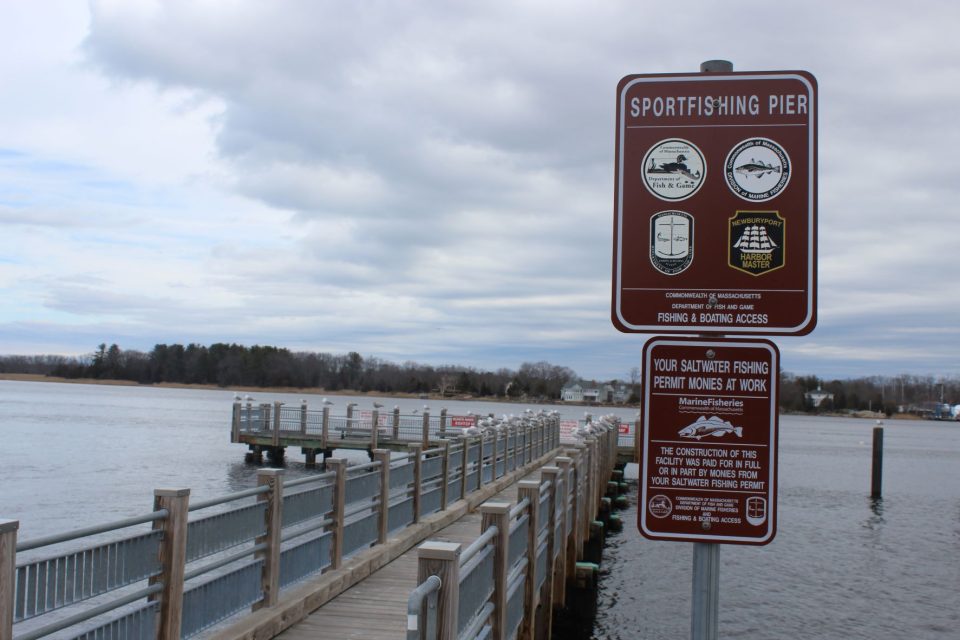MERRIMACK VALLEY – Warm weather is coming, and boaters, yacht owners, kayakers, dogs and ducks must again contend with raw sewage floating down the Merrimack River.
While the fight up and down the river to rid it of untreated sewage is limping along, the city of Newburyport is the first and only municipality on the river to provide on-site signage in five locations to alert the public when cities upriver have dumped raw sewage.
The signs use a QR code, which can be scanned by a cell phone, to provide information about the sewage discharge. The signs are being placed at Moseley Woods, Cashman Park, the boat ramp area near Tuscan Sea Grill & Bar restaurant, the Joppa Flats boat ramp and Plum Island Beach.
A consolidated sewage overflow (CSO) occurs during heavy rainfalls in municipalities that do not separate street drains and sewer pipes. During the storms, sewer plants in these cities are overwhelmed by the combination of rainwater and sewage and are forced to discharge it directly into the river.
Along the Merrimack, the combined systems are in Haverhill, Lawrence, Lowell, Nashua, NH, and Manchester, NH.
John Macrone, a leader in the war against CSOs with the Merrimack Valley Watershed Council, described the new signage in Newburyport as “helpful” and hopes other communities will follow suit soon.
“Many people aren’t aware that sewage is regularly discharged into the river, and that it can be unhealthy to swim in the river for two or so days after a significant rainstorm,” he wrote in an email.
“Ultimately (the signage) also gets people wondering why there is sewage in the river, and why the problem hasn’t been fixed,” wrote Macrone, a policy and education specialist with the Watershed Council. “We need that kind of public awareness in order to fix this problem.”
The watershed council estimates that more than 500 million gallons of raw sewage are released into the river yearly during 40 to 60 CSOs. If it takes two days for the river to discharge the sewage, that means the river is severely polluted 80 to 120 days a year.
Macrone said it will cost at least $1 billion to fix the CSO problem. Some cities and towns on the river are allocating their American Rescue Plan Act (ARPA) funds to separate their stormwater and sewage systems.
Dyke Hendrickson, author of two books on the Merrimack and advocate for a cleaner river, agreed that the new signage will be useful to residents and visitors.
“Those coming here after heavy rains should know that they should not go swimming, nor put their dogs in the water. Fish caught should not be eaten,” Hendrickson wrote.
The author of Merrimack, The Resilient River and an upcoming book, Reclaiming the Merrimack, Hendrickson wrote, “We all have a lot to learn about CSOs – and how to combat them.”
Macrone described the progress toward solving the CSO problem as “a mixed bag.” He said Haverhill and Manchester are making good progress, while Lowell is not and may miss the opportunity to fix its problem with federal funds.
Haverhill is a relatively small source of CSOs with about 6 percent. Manchester is the largest source of CSOs in the Merrimack with 40 to 45 percent of the total releases.
Those cities have reached a consent decree with the U.S. Environmental Protection Agency and the Massachusetts Department of Environmental Protection to begin building storm water discharge pipes that do not combine with sewage pipes and treatment plants.
Lowell, the second largest source of CSO with about 40 percent, has been negotiating a consent decree for about 18 months after its first plan was inadequate.
“Right now, there is a once-in-a-generation amount of federal funding available to fix problems like CSOs,” Macrone said of the ARPA federal funds. “We are concerned that this pool of money will dry up before the Lowell consent decree is put in place, which would mean that residents of Lowell would have an extremely large financial burden to bear.”
When Sewage Flows Down the River
Tuesday March 21, 2023




